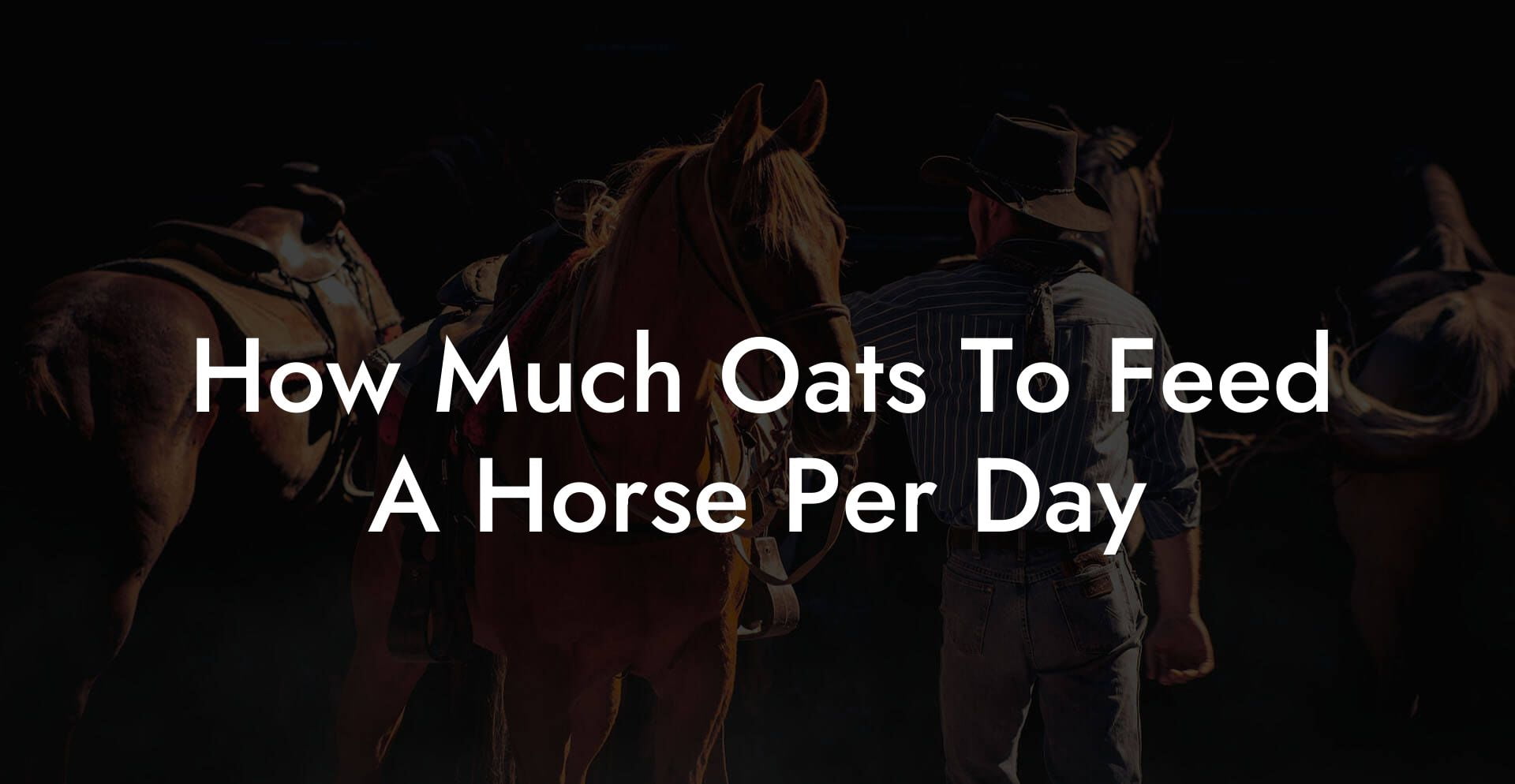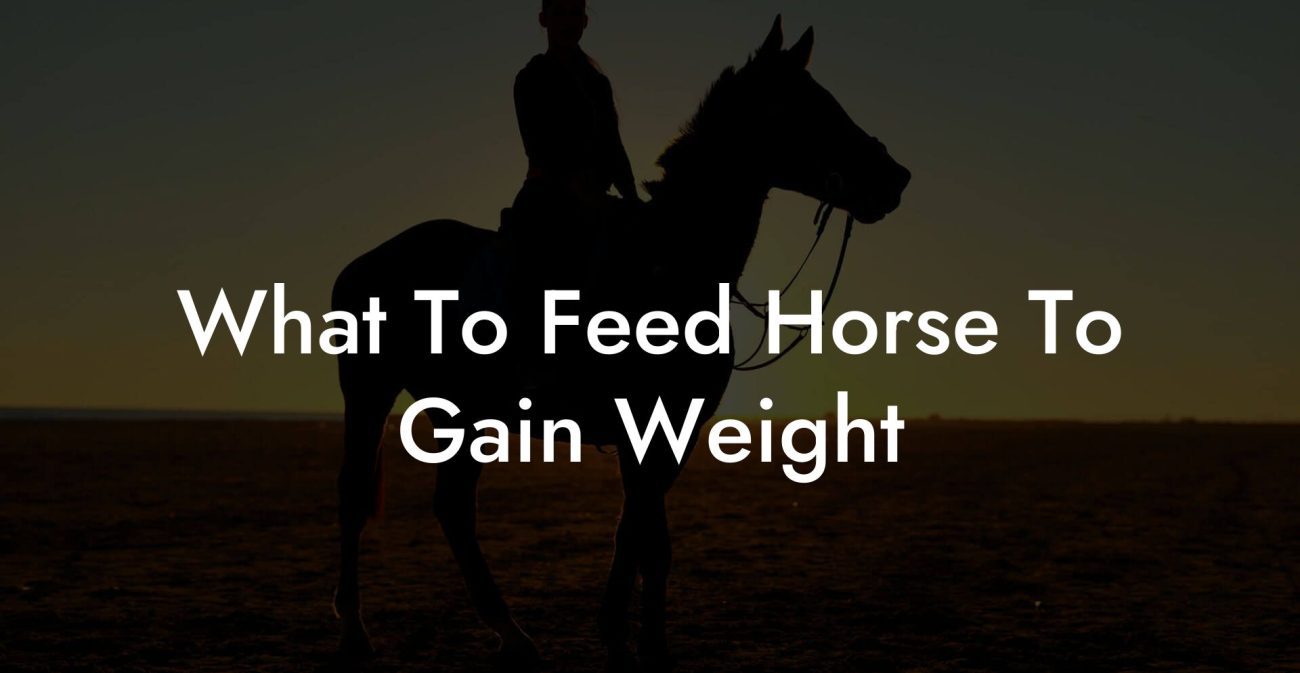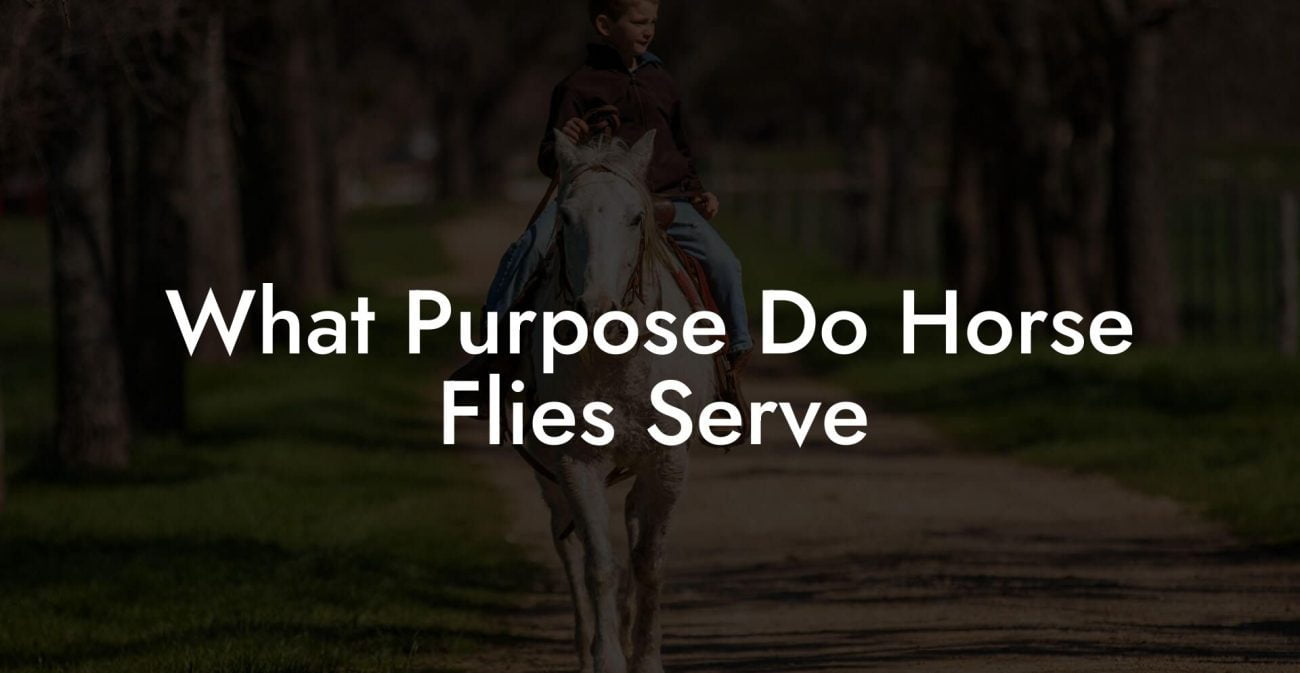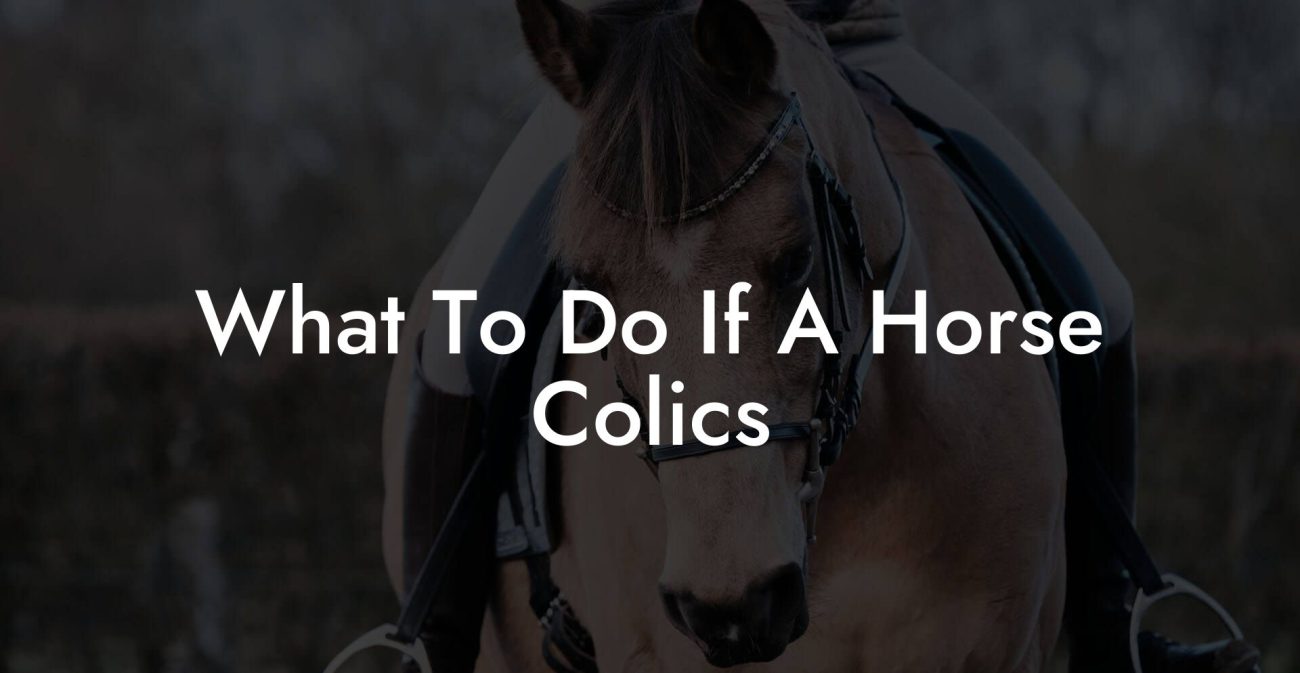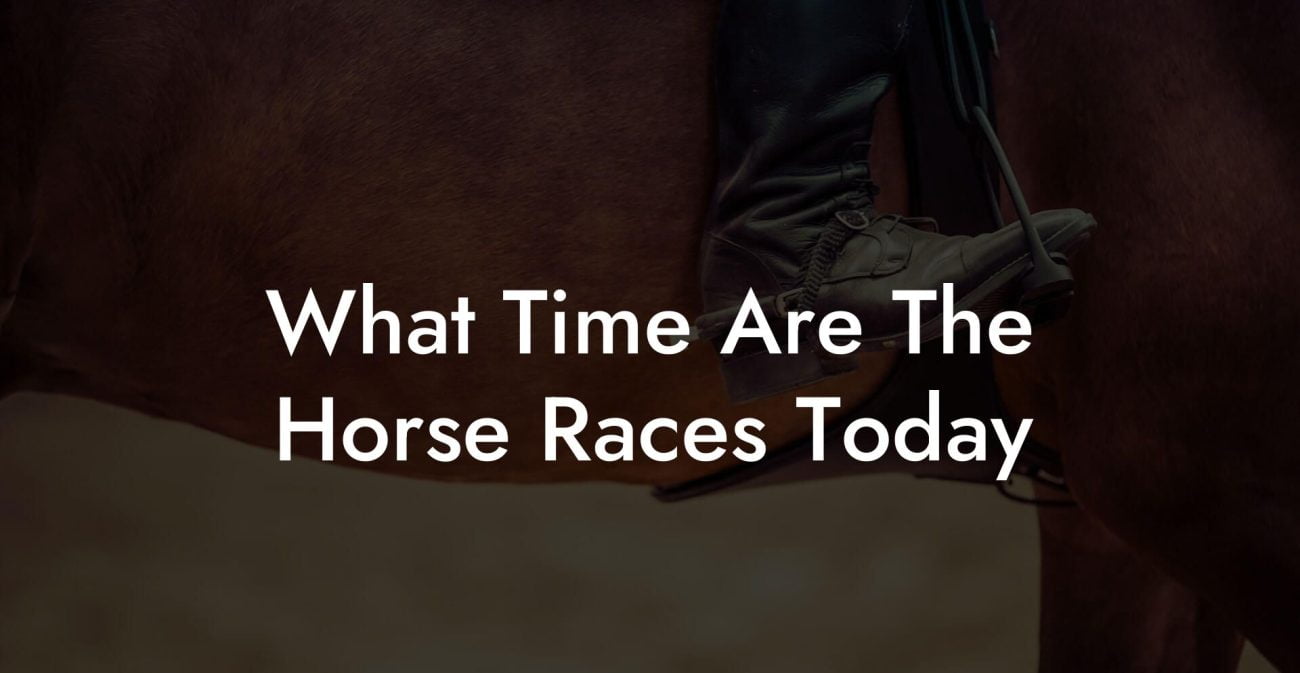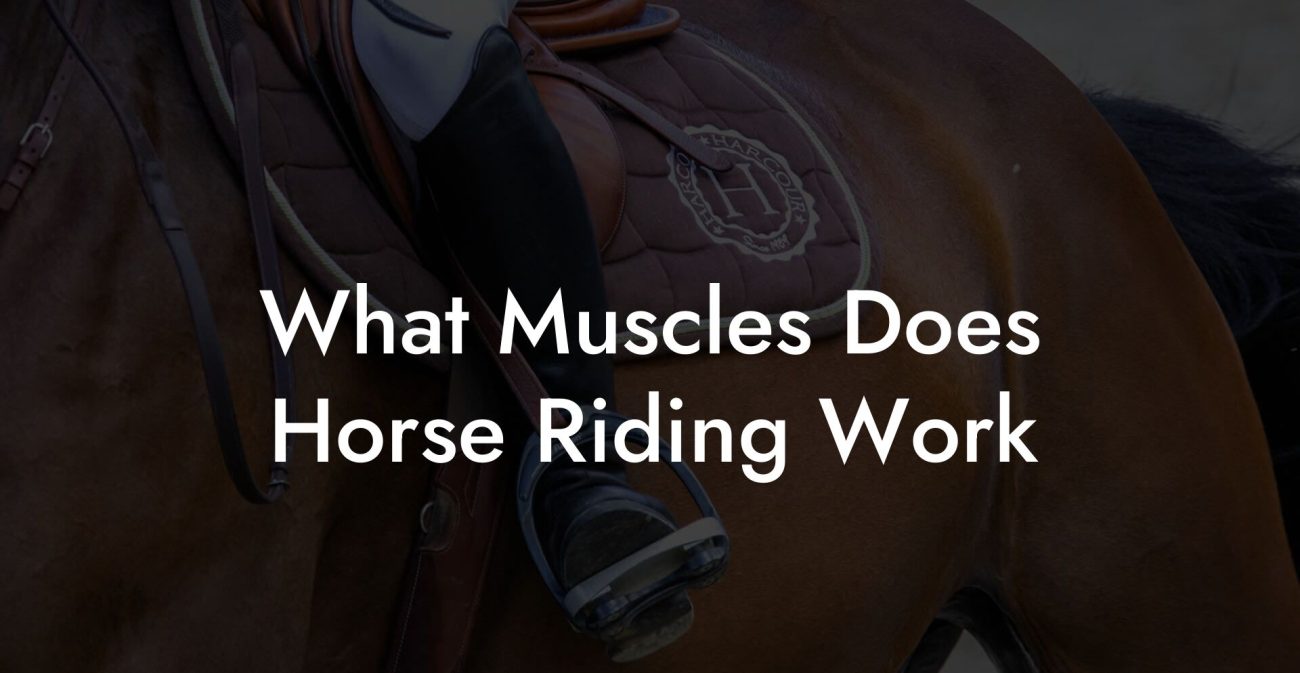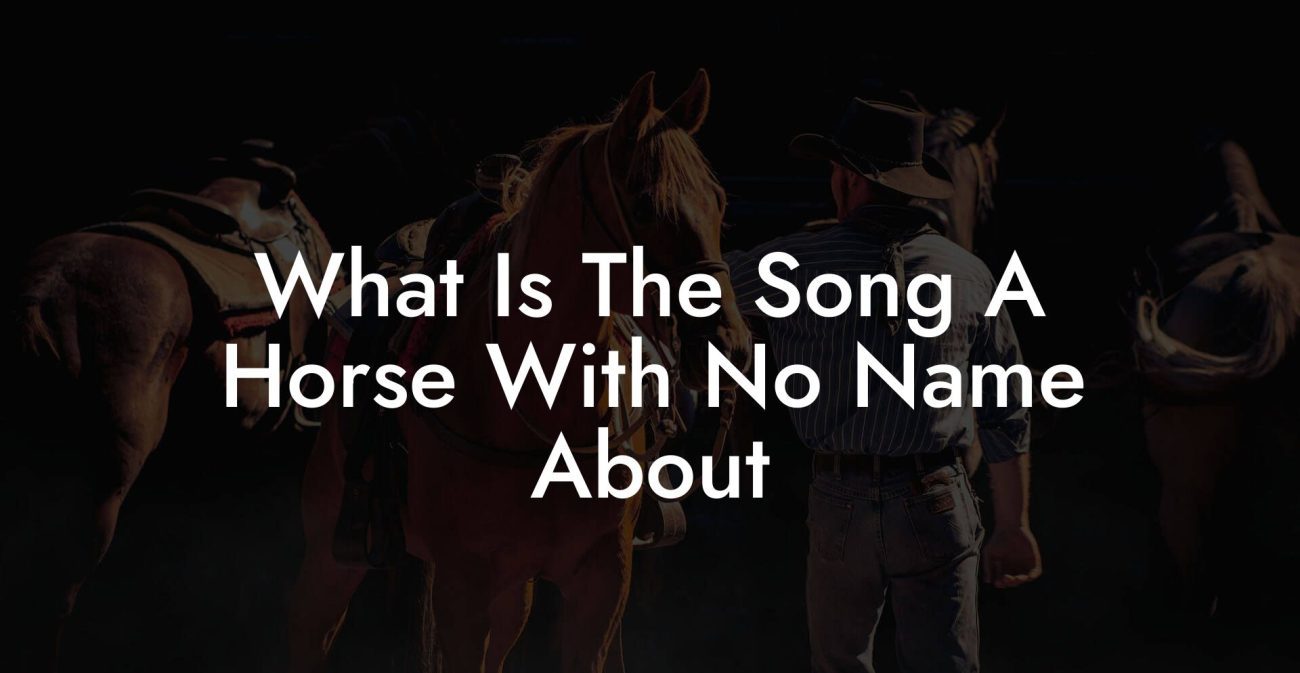Ever wondered how much oats to feed your horse per day without turning your stable into a chaotic cereal carnival? Whether you're a millennial with a penchant for sustainable living or a Gen-Z equestrian enthusiast looking to optimize your four-legged friend’s diet, you’ve landed in the right spot. Let’s dive into the surprisingly nuanced world of oats in a horse’s diet, where nutritional science meets practical hoof care, and where a dash of humor makes the feed calculation as enjoyable as a sunny day in the paddock.
Quick Links to Useful Sections
- Understanding Horse nutrition: The Role of Oats in Equine Diets
- The Beneficial Benefits: Oats as a Nutrient Powerhouse
- How Much Oats to Feed a Horse Per Day: Essential Factors to Consider
- Step-by-Step Guide: Calculating the Right Amount of Oats for Your Horse
- Step 1: Assess Your Horse’s Weight and Condition
- Step 2: Determine Activity Requirements
- Step 3: Consider Overall Diet Composition
- Step 4: Calculate the Percentage
- Step 5: Introduce Oats Gradually
- Balancing Act: Integrating Oats with a Holistic Diet
- The Foundation: Forage and Hay
- Supplementing with Oats
- Monitoring Body Condition and Energy Levels
- Potential Pitfalls: Risks of Overfeeding Oats
- Expert Opinions and Real-Life Experiences
- Resources and Community Support: Your Next Steps
- Crunching the Numbers: Oats in Different Feeding Scenarios
- The Show Jumper
- The Trail Ride Enthusiast
- The Pasture Rover
- Customizing Your Feed: Tailored Oat-Feeding Strategies
- FAQ: Your Burning Questions About Feeding Oats to Horses
- Your Path to a Balanced, Energetic Equine Diet
Understanding Horse nutrition: The Role of Oats in Equine Diets
Horses are grazing machines by nature, built to process fibrous, nutrient-dense foods. Yet, in our modern era, the inclusion of grains like oats has become a popular choice among horse owners seeking that extra energy boost. Oats are far more than a breakfast cereal for humans; they pack a heavy nutritional punch that can benefit a horse’s performance and overall health when fed in the right amounts.
In the equestrian world, oats have earned a reputation as a quality energy source. They are rich in fiber, vitamins, and essential minerals that help maintain healthy digestion, support muscle function, and even contribute to a shiny coat. However, as every seasoned horse owner will attest, the secret lies in moderation, too many oats can disrupt a horse's natural digestive balance.
The modern approach to equine nutrition is about tailoring your horse’s diet to its specific energy demands, work level, and metabolism. For today’s informed creature comforts, oats are a strategic component when combined with pasture, hay, and a balanced mix of supplements. As we move forward, you’ll get tips on integrating oats into a broader dietary plan, ensuring galoping vitality while maintaining digestive harmony.
The Beneficial Benefits: Oats as a Nutrient Powerhouse
Oats are celebrated for their digestible energy and fiber content. They release energy slowly, making them an excellent option for horses with moderate to high energy requirements, whether in training or pasture play. Here’s why oats often find a treasured spot in your horse’s feed bucket:
- High Digestible Energy: Oats offer a balanced influx of energy that fuels muscle performance, ideal for active horses without giving them a sugar rush.
- Rich in Fiber: Aiding in digestion and promoting a healthy gut flora, fiber in oats helps keep everything moving on the right track.
- Source of Essential Nutrients: Packed with vitamins (like B vitamins) and minerals, oats contribute to overall metabolic processes, reinforcing your horse's stamina.
- Palatability Factor: Most horses find the taste of oats appealing, making mealtime enjoyable and stress-free.
While these benefits are compelling, it's crucial to remember that oats should complement, not replace, the fiber-rich forage that is essential for your horse's digestive health. The strategic mix of oats and hay paves the way for a balanced diet that supports both energy needs and long-term wellness.
How Much Oats to Feed a Horse Per Day: Essential Factors to Consider
Deciphering the correct amount of oats to feed a horse per day is not a one-size-fits-all formula. Instead, it’s a dynamic decision influenced by several factors including the horse's age, weight, activity level, and overall dietary needs. As with any nutritional decision, balance is key.
1. Age: A young, growing horse may have different nutritional requirements compared to a mature or senior mare or stallion. While oats can provide a beneficial boost, young horses should primarily consume forage to support growth.
2. Weight and Body Condition: A lean, active horse may be able to process more oats than one that is overweight or has metabolic concerns. Tailoring portions according to body condition ensures that you’re feeding for performance and health.
3. Activity Level: A horse in high-demand disciplines such as show jumping, dressage, or endurance racing usually requires more energy. For these dynamic athletes, oats can be an excellent pre-work or post-work fuel. However, for a leisure riding horse, excessive grain may lead to unwanted weight gain.
4. Overall Diet Composition: Oats should be integrated into a balanced feeding regimen that includes quality hay, pasture, and possibly other grains or supplements. This ensures that no essential nutrient is overlooked while avoiding gastrointestinal upsets from too much concentrate.
To simplify your feed plan, consider the general recommendation: many equine nutritionists suggest oats should not exceed 0.5% to 1% of a horse’s body weight per day. For a 1,000-pound horse, that translates to roughly 5 to 10 pounds of oats daily, a starting point that is often fine-tuned by an equine nutritionist or veterinarian.
It’s also worth mentioning that every meal is a chance to show your horse some love. By monitoring their performance, energy levels, and digestion, you can adjust the amount of oats gradually. Remember, when in doubt, smaller portions and frequent feedings can lead to consistent energy levels without overloading your horse’s digestive system.
Step-by-Step Guide: Calculating the Right Amount of Oats for Your Horse
Ready to get practical? Let’s break down the process of determining how many oats to serve your horse each day. Follow these steps to ensure your horse's meal plan hits the nutritional sweet spot.
Step 1: Assess Your Horse’s Weight and Condition
Begin by accurately weighing your horse or estimating its weight using a weight tape. This measurement is your starting point and directly influences the percentage of oats you can safely feed.
Step 2: Determine Activity Requirements
Evaluate your horse’s activity level. Is it a high-powered athlete in training, engaged in rigorous competitive events, or a chilled-out pasture cruiser? High-energy activities warrant a higher allowance of oats in the diet.
Step 3: Consider Overall Diet Composition
Look at the entirety of your horse’s diet. Are you feeding a majority of forage, or does your horse also consume other grains or supplements? Integrating oats should complement your existing nutritional structure, not disrupt it.
Step 4: Calculate the Percentage
The standard guideline for many horses is 0.5% to 1% of their body weight in oats per day. For instance, for a 1,000-pound horse, calculate:
- Lower recommendation: 1,000 lbs x 0.005 = 5 lbs of oats
- Upper recommendation: 1,000 lbs x 0.01 = 10 lbs of oats
Adjust within this range based on your horse’s specific needs. For an energetic, high-performing horse, leaning towards the higher end makes sense, while a still or sedentary horse might benefit from the lower range.
Step 5: Introduce Oats Gradually
Any dietary change should be gradual to allow your horse’s digestive system to adapt. Start by adding a small portion of oats and gradually increase the quantity over a period of several days.
With this step-by-step approach, you not only ensure that your horse receives the optimal amount of energy but also promote a smooth transition that minimizes digestive disruptions.
Balancing Act: Integrating Oats with a Holistic Diet
Think of oats as one piece in the equine nutrition puzzle. While they’re an excellent energy source, a horse’s diet must be well-rounded to maintain overall health. Here’s how oats fit into the greater scheme of horse nutrition:
The Foundation: Forage and Hay
Forage should always serve as the cornerstone of your horse’s diet. High-quality hay or pasture provides the necessary fiber critical for digestive health. Oats enhance the diet by supplying concentrated energy, but without a solid base of roughage, you risk upsetting your horse’s digestive system.
Supplementing with Oats
Oats work best when paired with essential vitamins, minerals, and other supplements as required. For horses with high energy demands, consider adding a vitamin-mineral mix to further boost overall performance.
Monitoring Body Condition and Energy Levels
Every horse is an individual, so regularly monitor your horse’s body condition score (BCS) and energy levels. Adjust the amount of oats accordingly. A healthy balance keeps your horse fit and energetic without the risk of weight gain or metabolic issues.
Remember, oats are a supplementary tool. They should work synergistically with fiber-rich forage, not act as a replacement. This balanced approach ensures that your horse’s digestive health remains on point while receiving the energy needed for optimal performance.
Potential Pitfalls: Risks of Overfeeding Oats
As with any dietary component, moderation is paramount. Overfeeding oats can lead to several issues that might compromise your horse’s health:
- Digestive Upsets: Too many oats, introduced too quickly, can lead to colic, laminitis, or other digestive disturbances. The horse's gut flora is finely tuned to process fiber, and excessive grains can upset this balance.
- Weight Gain: While energy is essential, too much of it without proper exercise can lead to unwanted weight gain, increasing the risk of metabolic disorders.
- Insulin Dysregulation: Horses susceptible to insulin resistance or metabolic syndrome may find that high-starch feeds like oats exacerbate their condition.
- Behavioral Changes: An overload of energy may lead to hyperactivity, making a well-behaved horse turn into a jittery, hard-to-manage bundle of energy.
The key to avoiding these pitfalls is careful, informed management. By starting with modest quantities, gradually adjusting, and monitoring your horse’s response, you can safely integrate oats without risking the health pitfalls of overfeeding.
Overfeeding can easily become a slippery slope, but with a dose of patience and a sprinkling of equine common sense, you can easily steer clear of these common hazards.
Expert Opinions and Real-Life Experiences
The best advice often comes from those who have walked the path before you. Many equine nutritionists, veterinarians, and experienced horse owners recommend oats as part of a balanced diet, but with a twist. Their advice? Always tailor the diet to the individual!
Take, for example, the story of Rocky, a spirited Quarter Horse with a penchant for sprinting across sunny fields. His owner, Jamie, began incorporating oats gradually into his diet after noticing a slight lag in performance. With careful calculation (sticking to roughly 0.7% of his body weight), Rocky soon displayed improved muscle tone and energy levels, all while maintaining steady digestion. Jamie’s story is backed by research and countless case studies, underscoring the importance of moderation and personalization.
Another tale comes from Lisa, an enthusiastic rider and nutrition blogger who experimented with oats as a pre-workout booster for her gentle mare, Daisy. Despite initial hesitations, careful monitoring over several weeks allowed Lisa to discover the sweet spot in Daisy’s diet, resulting in enhanced performance and a happier, healthier mare.
These real-life successes are not mere anecdotes, they are practical demonstrations of how oats, when fed correctly, can play a vital role in supporting health, performance, and overall vitality. As with any feeding regimen, collaboration with a knowledgeable veterinarian or nutritionist ensures that both your horse and your peace of mind stay happy.
Resources and Community Support: Your Next Steps
Getting started with oats and broader equine nutrition can be a thrilling journey, and you don’t have to navigate it alone. Here are some top resources to bolster your knowledge and keep you connected to a community of like-minded horse enthusiasts:
- Equine Nutrition Webinars and Workshops: Keep an eye out for online events hosted by renowned equine nutritionists. These sessions offer insightful advice and personalized tips.
- Online Equine Forums and Social Media Groups: From Reddit threads to Facebook groups, there are vibrant communities where horse owners share their experiences, recipes, and success stories around oats and other feed management strategies.
- Veterinary Consultations: Schedule regular check-ups with your equine veterinarian to ensure your horse’s dietary adjustments are on track with overall health goals.
- Blogs and Educational Websites: Websites like The Horse, Equine World, and specialized nutrition blogs provide deep-dive articles and testimonials on feeding oats and holistic equine care.
- Local Equine Associations: Joining clubs or riding associations in your area can offer access to seminars, group discussions, and local experts who understand regional feed availability and climate-specific considerations.
These resources not only provide practical insights into how much oats to feed a horse per day but also connect you to a larger community that celebrates sustainable, informed equine nutrition. Whether you’re just beginning your nutritional journey or seeking to fine-tune an already robust feed plan, community support and continuous learning are your best allies.
Crunching the Numbers: Oats in Different Feeding Scenarios
Let’s break down some common scenarios to help you understand how oats fit into real-world feeding plans:
The Show Jumper
For a high-energy show jumper, oats can serve as a critical pre-event supplement. Feeding roughly 8-10 pounds of oats for a 1,000-pound athlete a day, spread between a pre-work meal and a post-training snack, can provide the sustained energy necessary for peak performance. Always balance this with fiber and electrolytes to prevent blood sugar spikes.
The Trail Ride Enthusiast
For horses that enjoy long, leisurely rides on the trail, the focus shifts towards endurance and steady energy release. In these cases, a lower inclusion rate (around 5-7 pounds for a 1,000-pound horse) keeps energy levels consistent without risking overexcitement or digestive upset.
The Pasture Rover
Many horses thrive on a full diet of pasture and hay, with oats serving as a supplementary boost during colder months or when extra energy is needed. For pasture rovers, a scant yet strategic addition of around 4-6 pounds a day aligns perfectly with natural grazing habits, ensuring that oats are an enhancer rather than the centerpiece.
In every scenario, the underlying principle is balance. The right amount of oats is the golden mean between performance and wellness, a concept that resonates with modern equine care and your proactive approach to horse nutrition.
Customizing Your Feed: Tailored Oat-Feeding Strategies
No two horses are identical, a truth that applies as much to their personalities as it does to their dietary needs. Crafting a tailored oat-feeding strategy means factoring in personal preferences, unique metabolic rates, and even seasonal variations.
Seasonal Adjustments: During colder winter months, horses can benefit from slightly increased energy intake, including a bit more oats, to help maintain body temperature and energy reserves. In contrast, during the lush, resource-rich summer season, you might reduce oats to let the abundant pasture work its magic.
Individual Preferences and Digestibility: Some horses have a natural affinity for oats, eagerly chowing down, while others may be more selective. Observe your horse’s behavior and adjust the feed ratio accordingly. Small changes can lead to big improvements in energy levels and digestive harmony.
Consultation with Experts: A quick call to your trusted equine nutritionist can tailor these general guidelines into a bespoke feeding strategy. The resulting plan will consider nuances like your horse’s breed, conformation, and overall activity level, a perfect blend of art and science.
Customizing your approach ensures long-term health and performance, affirming that feeding oats isn’t a rigid formula but a flexible framework that evolves with your horse’s lifestyle.
FAQ: Your Burning Questions About Feeding Oats to Horses
We’ve gathered some of the most frequently asked questions by horse owners keen to master the oats feeding game. Dive into these FAQs to get clear, concise answers that elevate your nutritional know-how.
1. How do I determine the exact amount of oats my horse needs?
It all starts with assessing your horse’s weight, activity level, and overall diet composition. A general guideline is to feed between 0.5% and 1% of your horse’s body weight, but tailor this based on its specific energy requirements.
2. Can oats replace a portion of my horse’s hay?
No. Oats are a supplemental energy source and should not replace the fiber-rich forage essential for proper digestion. Think of oats as the icing on your horse’s nutritional cake.
3. What are the signs that my horse is eating too many oats?
Watch for signs such as slight colic, increased hyperactivity, or weight gain. If your horse shows any digestive disturbances, it may be time to reduce the oat portion.
4. How quickly can I adjust my horse’s diet to include oats?
Introduce oats gradually over several days to a week to allow your horse’s digestive system to adapt. Sudden changes can trigger digestive upset, so slow and steady is best.
5. Are there alternatives to oats for energy?
Absolutely. Other grains like barley and corn may be used, but they have different nutritional profiles. Always consult with an equine nutritionist to choose the best option for your horse.
6. Is it necessary to adjust oats based on the season?
Yes, seasonal variations can impact your horse’s energy needs. Increase oats slightly during cold weather for added warmth, and reduce them in summer when pasture is abundant.
7. Can I feed oats to horses with metabolic issues?
Caution is advised. Horses with insulin resistance or metabolic syndrome may require lower starch feeds. Consult your veterinarian for personalized dietary recommendations in such cases.
8. How do oats impact the overall energy levels of my horse?
Oats provide a balanced release of energy, making them ideal for maintaining consistent fuel throughout the day. However, they must be balanced with fiber-rich foods to ensure stable blood sugar levels.
These FAQs are designed to give you a reliable starting point, but remember, every horse is unique. Regular consultation with equine nutrition experts is key to a successful feeding strategy.
Your Path to a Balanced, Energetic Equine Diet
Incorporating oats into your horse’s diet isn’t about following a rigid rulebook, it’s about fine-tuning a system that supports vibrant health, consistent performance, and that unmistakable equine sparkle. With careful observation, gradual adjustments, and a balanced blend of forage and concentrates, you’re set to craft a feed plan that meets both the energy demands and the nutritional integrity of your horse.
As you put these guidelines into practice, remember that your horse is an individual with unique needs and quirks. The goal is to create a feeding routine that’s both scientifically sound and tailored to your horse’s personality. Engage with fellow owners, discuss your observations, and stay open to expert advice. Every step of the journey not only builds a healthier horse but also strengthens the bond between you and your equine companion.
So, equip yourself with knowledge, stay curious, and enjoy the ride. From calculating the perfect portion of oats to balancing a deliciously varied diet, your horse’s journey to optimal health is as exciting and unique as your own. Happy feeding, and here’s to many more energetic gallops under the open sky!

